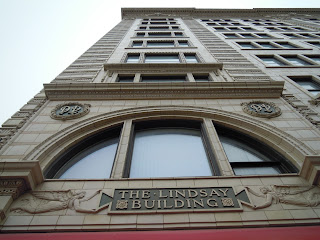Predictably, many have rushed to attack the students—and in doing so have missed some of the most basic points about such debates about historical figures. Some declare vehemently that we must not try to “stamp out history”—as if the protesters were demanding that Wilson’s legacy not be discussed, rather than demanding he cease to be singled out for special honors at the institution. As Karen Attiah rightly put it in her November 25 Washington Post column on this topic,
Of course [such figures as Wilson and Cecil Rhodes] will never be erased from history; nor do they need to be. But in forcing their sins into the international limelight, universities, and society by extension, must reevaluate the lionizing of such men.Others who attack the students’ demands emphasize the “nobody’s perfect” argument—pointing to the public and private flaws in everyone from George Washington to Martin Luther King, and suggesting that, by the protester’s logic, there is absolutely no one truly worthy of honoring.
While it is of course true that no one is without flaw, it is also true that, when we are judging public figures, large matters of public policy are more important than personal peccadilloes; that some have fewer flaws than others; that the achievements of some are greater than those of others; and, in the other direction, that the damage done by some is far greater than the damage done by others.
But how are we to judge fairly who should be honored and who is perhaps not so deserving of being honored? Another refrain of those attacking the Princeton students is that (to quote one comment in response to Attiah’s column), people such as the Princeton students must “stop demanding that historical figures be judged by the standards of today rather than by those of their own time.” One hears this said, of course, on almost every occasion when a historical figure is criticized for having been intolerant towards women, or towards those of other races, or towards gays and lesbians. The inference is often an extraordinarily simple one: that the past presents us with a flat picture, in which everyone in a given era (or at least every white male) was equally sexist, racist, and homophobic.
Let’s look at that assumption in the context of Woodrow Wilson’s attitudes about race. Did other American presidents of the time take a similar approach in dealing with African Americans in the civil service? Did other Ivy League universities in the early twentieth century act in much the same way as Princeton did under Wilson when it came to admitting African Americans as students?
The answer is in both cases a resounding no. Grover Cleveland and Teddy Roosevelt don't have a great record when it comes to African Americans and the civil service, but Wilson's is considerably worse. It’s worse as well than some of the oft-vilified Republican presidents of the 1920s; Calvin Coolidge, for example, apparently had a relatively good record in this area. Wilson’ racist policies as a university president during the years 1902-1910 also stand in contrast to others of his own era. African American students had by the first decade of the twentieth century been attending Harvard and Yale for more than twenty years; they were well established at Columbia as well. At Harvard African American women students were attending in sufficient numbers that they founded their own sorority in the first decade of the twentieth century.
It is with reference to facts such as those rather than purely “by the standards of today” that we should read Wilson’s refusal to allow even a single black student to enter Princeton. "The whole temper and tradition of the place,” he firmly declared of Princeton, “are such that no Negro has ever applied for admission, and it seems unlikely that the question will ever assume practical form." Wilson made very sure that the question indeed did not “assume practical form” during his tenure as university president—and it was not until the late 1940s, some seventy years after African Americans had begun to graduate from Harvard and Yale, that the same began to happen at Princeton.
Historical figures in any given era are not, in fact, all equally sexist and racist and homophobic; the past is not flat, and we should not try to make it so.
Nor should we feel obliged in perpetuity to pay special tribute to those who have been far more intolerant than others of their own era. The School of Public and International Affairs at Princeton will always have good reason to study Woodrow Wilson; surely they need not feel obliged to pay tribute to him.







